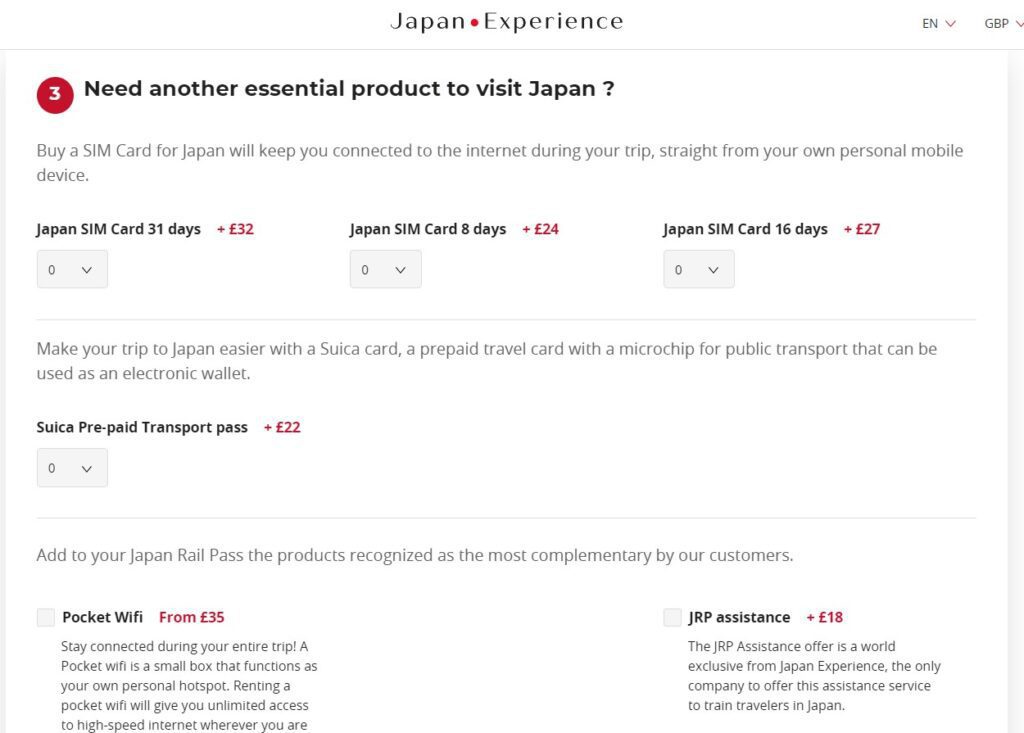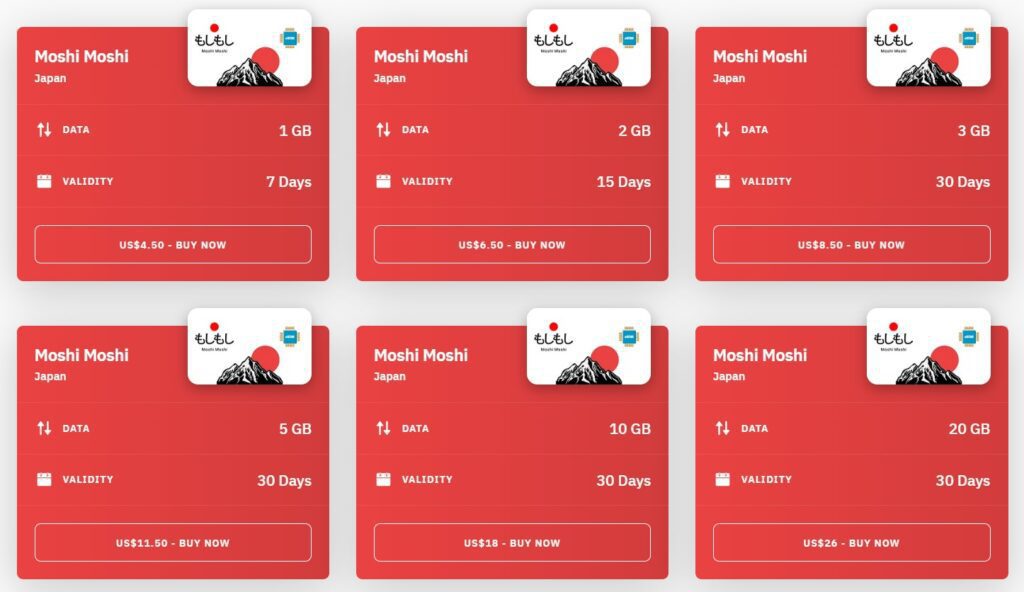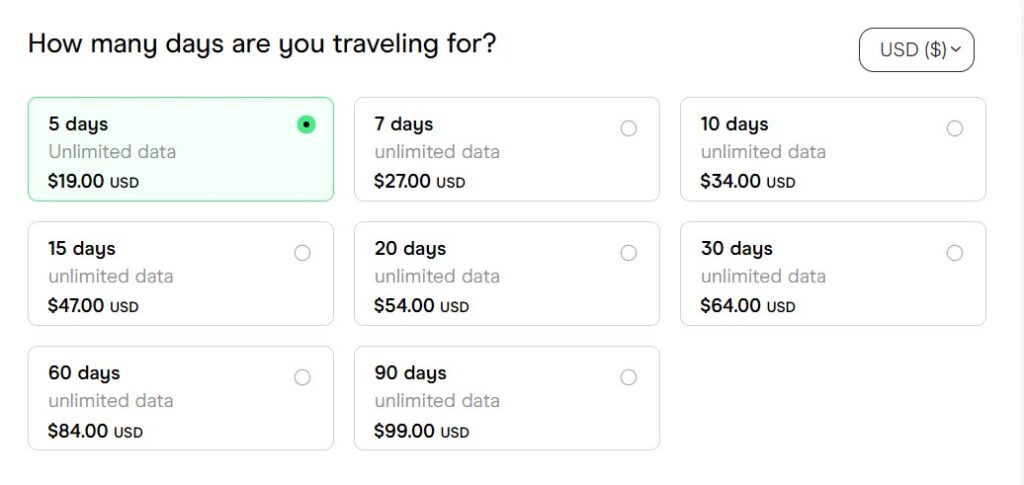When journeying to Japan, maintaining an internet connection is crucial to fully enjoy your experience in the country. Whether you need to find your way around, access tourist information, or share your adventures on social media, a reliable internet connection is indispensable. This article will delve into the most common methods of accessing the internet in Japan, including SIM cards, eSIMs, and Pocket Wifi devices.
Making Phone Calls in Japan
When it comes to making phone calls in Japan, foreign tourists may encounter certain challenges due to legal restrictions. Unlike many countries, Japanese regulations prohibit visitors from purchasing a standard SIM card solely for phone calls. This requirement arises from the fact that the most advantageous telephone rates and services are typically available to residents with long-term contracts and local bank accounts. However, there are alternative solutions to stay connected while exploring the Land of the Rising Sun.
One of the most popular options is the use of SIM cards or Pocket WiFi devices. These options provide internet access on your mobile device, which is essential for making calls through apps like Skype or WhatsApp. By leveraging the internet connection, these apps allow you to place phone calls to both mobile and landline numbers, enabling you to contact hotels, restaurants, and even make emergency calls without any difficulties.
Additionally, renting a Pocket WiFi can be a handy alternative. These portable devices offer a high-speed wireless internet connection, allowing you to use internet calling services on your own phone or any other connected device. This is an ideal choice if you’re travelling in a group or require a stable connection for multiple devices.

The Issue of Roaming: Steep Prices
Roaming in Japan can prove to be an expensive affair, primarily due to the international rates imposed by many mobile service providers when using their devices overseas. These rates can vary depending on the provider and the contracted plan, but they often surpass regular domestic usage charges by a significant margin.
Data roaming charges in Japan are particularly notorious for their steepness. For instance, certain providers may impose fees of €10 or more per 100 MB of data consumed. Considering that apps, web browsing, and general data usage can quickly devour several gigabytes, it becomes evident how these charges can accumulate exponentially, resulting in shockingly high bills upon your return home.
To steer clear of these exorbitant rates, it is advisable to explore alternatives such as local SIM cards or Pocket WiFi rentals, which offer more economical and controlled rates for data and call usage throughout your stay in Japan.
Our initial trip to Japan was somewhat chaotic in terms of connectivity. Despite having ordered SIM cards before our journey, we forgot the activation code, which prevented us from activating the SIMs until we reached the hotel and unpacked our bags. The issue? We were at a loss on how to reach the hotel without Google Maps, 😱, a genuine challenge! And let’s not even discuss the roaming bill we received afterwards… It’s an experience we’d prefer to leave in the past. 🥹.
SIM Cards
SIM cards offer a convenient solution for those who prefer to retain their current mobile phone and simply swap the SIM card upon arrival in Japan. These cards facilitate mobile internet access and enable both local and international calls. Here are some crucial factors to consider when selecting a SIM card in Japan:
- Compatibility: Ensure that your mobile phone is compatible with the networks and frequencies used in Japan. Most modern phones are compatible, but it’s crucial to verify this before purchasing a SIM card.
- SIM Card Size: Ascertain that you select the appropriate SIM card size for your phone. Some SIM cards are available in standard, micro, or nano formats, while others are universally compatible and can be adjusted as per your requirements.
- Duration and Data: Consider the length of your stay in Japan and your anticipated data usage. SIM cards typically offer prepaid options with different data allowances and validity periods. Select a card that aligns with your requirements to avoid running out of data during your trip.
Where to Purchase a SIM Card
SIM cards can be purchased at electronics shops, airports, mobile phone kiosks, and online. For instance, you can find them in Yodobashi Camera and Bic Camera stores, Japan’s two largest electronics and home appliance retail chains, which have branches in all major cities in Japan. Some popular companies offering SIM cards for tourists in Japan include:
- B-Mobile: offer SIM cards with varying durations and data volumes. These can be purchased in convenience stores, electronics shops, and on their official website.
- Sakura Mobile: provide SIM cards with unlimited data and Pocket Wifi device rental options. You can purchase SIM cards online prior to your trip.
- Mobal: offer SIM cards with nationwide coverage and international calling options. These can be purchased online or at their store at Narita Airport.
Prices
SIM Card prices can fluctuate depending on the duration and data included. Generally, tourist SIM cards with varying data options and durations range from around 3,000 to 8,000 yen (approximately €20 to €70) for a stay of 7 to 30 days.
We advise purchasing a SIM card before arriving in Japan for convenience. Moreover, if you also purchase the Japan Rail Pass in advance, you can seize the opportunity to buy the SIM card as a bundle in the same order through Japan Experience, as we typically do. This option allows you to prepare everything in advance and avoid complications upon your arrival in the country.

eSIM
eSIM is a more recent and convenient method of accessing the internet in Japan. Unlike physical SIM cards, an eSIM is a virtual card embedded in your compatible mobile device. Here are some important points to note about using eSIMs in Japan:
- Compatibility: Ensure your mobile device is compatible with eSIM technology. Some smartphone and tablet models support this feature, but you should verify this before travelling.
- Activation: Prior to travelling to Japan, you can activate an eSIM through your mobile service provider in your home country or directly in Japan via local providers. Make sure to follow the necessary steps to activate your eSIM before arriving in the country.
- Options and Plans: Similar to SIM cards, eSIMs offer various data plans and options. Conduct thorough research and select the plan that best suits your connectivity needs and budget.
Where to Purchase an eSIM
You can activate an eSIM through your mobile service provider in your home country before travelling to Japan. There are also local providers in Japan that offer eSIMs for tourists, such as:
- NTT Docomo: As one of the leading mobile operators in Japan, they offer eSIMs for tourists that can be activated in physical stores or online.
- Softbank: Another popular mobile operator in Japan that provides eSIM for tourists. You can activate it in their stores or online.
- Rakuten Mobile: They offer eSIM for tourists through their mobile app and partner stores.
Prices
Pricing for eSIMs can vary depending on the provider and the chosen plan. Generally, you can find eSIM plans for tourists with different data volumes and durations from around 3,000 to 10,000 yen (approximately €20 to €90) for a stay of 7 to 30 days.
If you prefer to purchase an eSIM before arriving in Japan, we recommend Airalo. They offer eSIMs with limited data at highly competitive prices. This is a convenient option if you do not require an excessive amount of data during your stay in Japan.


In case you are in search of an eSIM that provides unlimited data, we recommend considering Holafly. Their eSIMs offer the advantage of unrestricted data, allowing you to enjoy a constant and worry-free connection throughout your stay in Japan. This option proves particularly beneficial if you require a reliable and uninterrupted connection during your time in the country.

Pocket WIFI
Pocket Wifi devices are compact portable routers that enable you to establish your personal wifi network while in Japan. They are particularly beneficial for group travelers as they can connect multiple devices simultaneously. When using Pocket Wifi, there are several factors to consider:
- Device rental: Prior to your trip or upon arrival at the airport in Japan, you have the option to rent a Pocket Wifi device. Numerous rental companies provide various data plans and durations. It is advisable to conduct thorough research, compare prices and coverage, and then make an informed decision.
- Connectivity and range: It is essential to check the technical specifications of the Pocket Wifi device for its connection speed and range. This is particularly important if you plan to visit rural or remote areas of Japan, where network coverage may be limited.
- Device return: Familiarise yourself with the device return process at the end of your trip. Some rental companies offer return services at the airport, while others require you to send it back via mail. Ensure that you adhere to the instructions and meet the deadlines to avoid incurring additional charges.
Where to acquire Pocket Wifi devices
In Japan, you can rent Pocket Wifi devices before your trip or directly at the airport upon arrival. Some popular Pocket Wifi rental companies include:
- Japan Wireless: offer Pocket Wifi rentals with unlimited data options and nationwide coverage. You can conveniently book online and collect the device either at the airport or from their office in Japan.
- Global Advanced Communications: provides Pocket Wifi device rentals with a variety of data plans and durations. You can make online reservations and receive the device either at your hotel or at the airport.
Prices
The cost of renting a Pocket Wifi device varies depending on the duration and the included data. Generally, rental options can be found ranging from approximately 500 to 1,500 yen (equivalent to about 3 to 13 euros) per day, depending on the carrier and selected plan.
Pros and Cons

Advantages of purchasing a SIM card
- Convenient access: You can either acquire a SIM card for your phone prior to your journey or easily purchase one upon arrival at the airport in Japan.
- Compatibility: SIM cards are compatible with most unlocked phones, allowing you to utilize your regular applications and services.
- Unlimited data: Certain SIM plans offer unlimited data, enabling you to browse the internet, utilize social networking apps, and make calls without concerns about data limits.
- Flexibility: Depending on your requirements and the duration of your stay in Japan, you can select from various data plans.
- Continuous communication: Possessing a SIM card enables you to stay connected, send messages to your contacts, and access online information at any time.
Furthermore, unlike Pocket Wifi devices:
- No deposit is required.
- You are not obliged to collect or return the device at the airport during the beginning or end of your trip. You can simply dispose of it safely at the conclusion of your usage.
Disadvantages of purchasing a SIM card
- Cost: SIM cards can be relatively expensive, particularly if you require unlimited data or a significant amount of data for your trip.
- Installation: Occasionally, installing a SIM card in your phone can be complex, especially if you are unfamiliar with the process. It may involve SIM clipping or APN configuration.
- Changing cards: If you are utilizing a Japanese SIM card, you will need to replace your current SIM card, thereby preventing you from receiving calls or messages on your original number during your stay in Japan.
- Limited duration: Some SIM plans have a restricted duration, necessitating careful consideration to ensure that you purchase sufficient usage time for your stay or recharge the SIM if necessary.
Advantages of purchasing an eSIM
- No physical card: An eSIM eliminates the need for a physical SIM card as it is embedded in your device, making activation easy.
- Operator flexibility: With an eSIM, you can switch mobile operators without needing to replace the physical card, granting you more options during your stay in Japan.
- Simple activation: The eSIM can be activated through a dedicated app on your phone, simplifying the process compared to installing a physical SIM.
- Unlimited data: Similar to traditional SIM cards, some eSIM plans offer unlimited data, ensuring uninterrupted connectivity.
Disadvantages of purchasing an eSIM
- Limited compatibility: Not all devices are compatible with eSIM technology, so it is important to ensure that your phone supports it before your journey.
- Limited availability: Not all mobile carriers in Japan offer eSIM services, resulting in potential restrictions on carrier choice and available plans.
- Additional cost: Some operators may charge an extra fee for activating an eSIM, which can increase the overall cost of connectivity during your trip.
Advantages of purchasing a Pocket Wifi
- Shared connection: Pocket Wifi allows you to connect multiple devices, such as phones, tablets, and laptops, enabling multiple users to share a single connection.
- Unlimited data: Many Pocket Wifi providers offer plans with unlimited data, ensuring uninterrupted connectivity without data limitations.
- Easy installation: Using a Pocket Wifi is straightforward. You only need to power on the device, connect your devices to the wifi network, and you are ready to browse the internet.
Disadvantages of purchasing a Pocket Wifi
- Cost: Renting a Pocket Wifi can be more expensive compared to purchasing a SIM card or activating an eSIM, particularly if you are traveling in large groups or for an extended period.
- Size and transportation: Pocket Wifi devices are additional gadgets that you must carry with you during your travels, which can be inconvenient or occupy space in your luggage.
- Battery: Ensure that you charge the Pocket Wifi’s battery before starting your journey as its lifespan typically does not exceed 12 hours.
- Collection and return: Renting a Pocket Wifi usually requires picking it up and returning it to a designated location, such as an airport or rental office, which can be less convenient compared to the immediate activation of a SIM card or eSIM.
When deciding on the best mobile connectivity option for your trip to Japan, it is crucial to consider your individual needs, the duration of your stay, and the budget at your disposal.
In essence, having internet access is vital for maximising your experience in Japan. Whether you opt for a SIM card, eSIM, or Pocket Wifi device, it is important to assess compatibility, data options, and coverage to make an informed choice. While the previously mentioned companies are well-regarded options in Japan, it is advisable to conduct thorough research and compare different providers and plans to ensure a dependable and convenient internet connection throughout your visit.

.
Our Preferred Choice
Based on our personal experience, we are not particularly fond of Pocket Wifi as it can be inconvenient to carry an additional device in our backpack and constantly monitor its battery life. Instead, when we travel to Japan, we always prefer using a Japanese SIM card to stay connected to the internet. For our needs, high connection speeds or unlimited data are not essential, so a traditional SIM card meets our needs adequately. Although our phone supports eSIM, we find it more cost-effective to use a physical SIM.
Throughout the day, our internet usage primarily revolves around checking schedules and relying on Google Maps while we explore Japan. We strive to minimize distractions from our mobile phones to fully immerse ourselves in exploring the country. Once we return to our hotel in the evenings, we tend to devote more time to using our mobile phones. Taking advantage of the the hotel’s WiFi connection, we take the opportunity to share photos with our loved ones, connect with friends and family through social networking platforms, and engage in various similar activities.



